A new and versatile family of crosslinkers/binders for high-performance wood coatings has been developed. The innovative technology platform to the -VESTANAT® EP-M crosslinkers combines the benefits of silane chemistry with the performance of polyurethanes, enabling excellent scratch resistance while maintaining urethane properties in coatings. The core building block of this novel approach is 3-isocyanatopropyltrimethoxysilane (IPMS), which allows the freedom to design and create tailor-made binders and crosslinkers.
The resin concept also enables non-isocyanate (NISO) technology, exhibiting and exceeding polyurethane performance. This technology can be realized in one- and two-component coating formulations.
Aliphatic 2K-polyurethane wood coating technology is considered today’s benchmark for environmental etch and durability, and is well known for its excellent balance of flexibility and hardness. The technology offers superb overall properties, good adhesion to wooden substrates, and is easy to use in sanding, as a filling primer and as a topcoat.
Multilayer Matte Clearcoats
The top clearcoat or varnish layer on a piece of wood furniture is the first defense barrier against various mechanical/physical and chemical impacts. Brushes and dust leave micro scratches, aggressive chemicals like cleaners and suntan lotion cause swelling, and colored substances like red wine lead to discoloration (haze). The clearcoat needs to look new -even after several years.
Clearcoat quality has steadily improved, but there is still a need to significantly improve certain characteristics, particularly abrasion resistance. This trend is not just limited to market segment-specific clearcoats.
One way to increase clearcoat scratch resistance and satisfy the market needs concerning a further integration of functions is to use silane/urethane-hybrid crosslinkers. As shown in Figure 1, IPMS can be reacted with any kind of (isocyanate) reactive groups (R-group), preferably with hydroxyl groups of diols, polyols or oligomeric diols to build an alkoxy-silane functional urethane-linked non-isocyanate (NISO) crosslinker/binder.
The choice of R-group will primarily determine the crosslinker or binder’s properties and hence, will also significantly influence the coating’s attributes. For example, the longer the crosslinker or binder’s backbone, the more it acts as a flexibilizer in the coating. In contrast, a branched and short R-group will result in higher hardness.
By formulating with VESTANAT EP-M crosslinkers, urethane linkages are imparted, and beneficial properties that are known from aliphatic polyurethanes (e.g., chemical resistance, good adhesion and excellent mechanical properties) are provided.
The illustrated IPMS-based crosslinkers can realize two possible reaction mechanisms via their alkoxy groups. For ambient curing, the reaction is a combination of hydrolysis and condensation to form siloxane linkages (Si-O-Si). The other crosslinking mechanism is a transesterification reaction, which occurs only if a hydroxyl group (e.g., an acrylic polyol) is present and at elevated temperatures. Each of these mechanisms can be accelerated by using appropriate catalysts, which are described in numerous publications.1,2
This article describes a performance analysis of coatings that have been crosslinked at ambient temperatures by hydrolysis. In the first study, the VESTANAT EP-MF 201 was used as a single binder. In the second it was used as a hardener with a hydroxyl-functional acrylic resin to build an interpenetrated network, which is also known from epoxy siloxane technology (Figure 2).
To analyze the impact of siloxane networks compared to standard 2K PU formulations, the clearcoat formulation in Table 1 was used as a standard to show the performance of the VESTANAT EP-MF 201 as a single binder. The curing time was approximately 1 h at -ambient temperature.
VESTANAT EP-MF 201 is a solvent- and isocyanate-free, ready-to-use version of an alkoxy silane-terminated crosslinker or binder requiring no other crosslinkers (i.e., polyisocyanates). It can be used for 1K moisture-curing systems. The resulting coatings show outstanding scratch, stain and chemical resistance. By combining the VESTANAT EP-MF 201 with compatible polyols, 2K formulations are obtained (Table 2). The right mixing ratio between the two components should be determined. Due to an interpenetrated network, properties like scratch, stain and chemical resistance can be adjusted on demand. There is no need to add polyisocyanate crosslinkers. The final coating is a NISO-system and, depending on the characteristics of the polyol, potentially low in VOC.
Figure 3 shows a comparison between 2K PUR (left) and a 2K VESTANAT EP-MF 201-based formulation (right). Both systems were applied on wood and were scratched using a modified crockmeter test. While many and very distinctive scratches occur on the unmodified 2K PUR surface, the VESTANAT EP-MF 201-based formulation resists the abrasive impacts, keeping the shiny, initial appearance.
In addition to wood coatings, this product finds application in plastic coatings. The resulting scratch-, stain- and chemical-resistant coatings are excellent for sporting goods and the automotive industry. The backbone of the novel crosslinker technology is variable, which leads to the freedom to create tailor-made crosslinkers with multiple functionalities.
Summary
The VESTANAT EP-M range is a family of silane/urethane-hybrid crosslinkers that generates multifunctional, scratch-resistant coatings applicable on a variety of substrates. Due to specific modifications, curing at ambient temperature is possible. These crosslinkers and binders can be used in several application fields beyond wood coatings. This technology enables high-performance NISO coatings, even exceeding PUR performance. In addition, scratch resistance of traditional 2K PUR coatings can be improved significantly by substituting the isocyanate hardener.
References
1 Lomölder, R.; Görlitzer, H.; Hallack, M.; Unkelhäußer, T. Patent application EP 2 676 982, 2012.
2 Witucki, G. Journal of Coatings Technology, 1993, 57-60.
For more information, visit www.evonik.com/crosslinkers or email markus.hallack@evonik.com.
By Hans Görlitzer, Ph.D., Head of Business Development, Crosslinkers; Markus Hallack, Senior Manager New Business Development, Coatings & Additives; Rainer Lomölder, Ph.D., Head of PL VESTANAT and Derivatives, Crosslinkers; Tobias Unkelhäußer, Technical Service, Crosslinkers; and Corey King, Applied Technology Manager, Crosslinkers | Evonik Industries, Marl, Germany

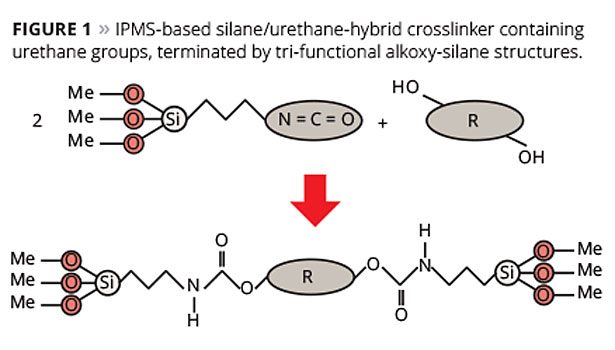
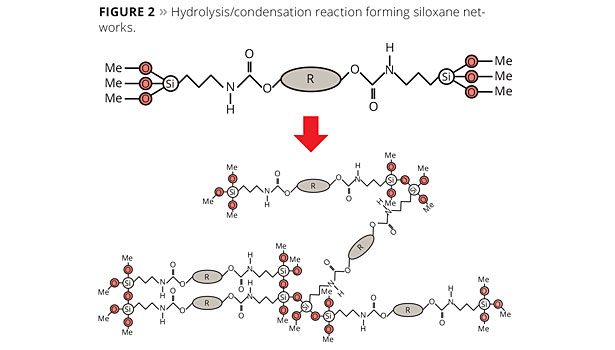
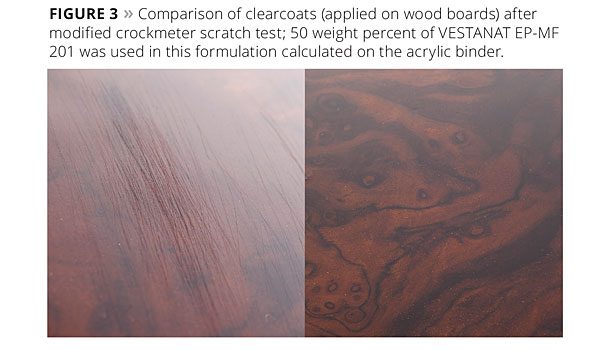
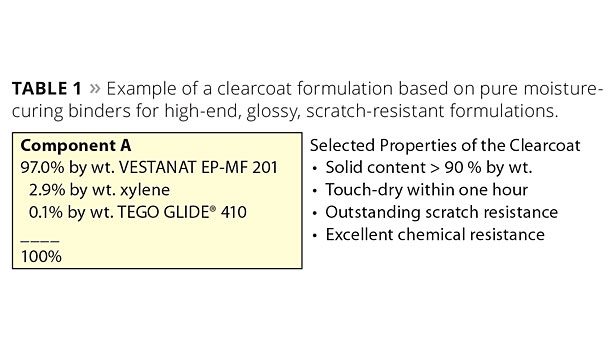
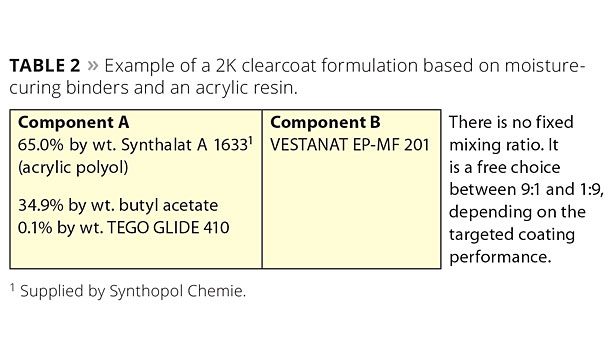



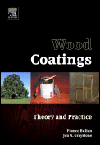

Report Abusive Comment